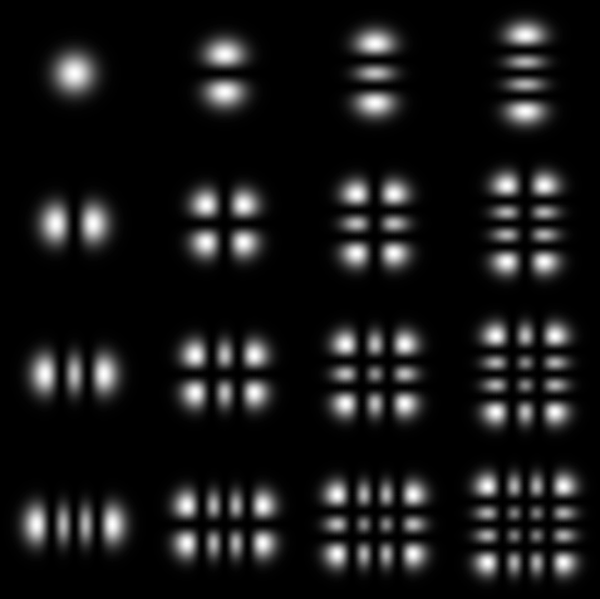Welcome to Wolfram Community!
Please note how code, links and images were formatted in your post and follow this format in future.In your simple case you have to increase PlotPoints option to DensityPlot up to say 50. But... it is always a good idea to search the Wolfram Demonstrations Project for solution of your problem. It also provides code free to download. Here is publication that is relevant to you:
Gaussian Laser Modes.

Adopting code from this Demonstration I could quickly build this image:
f[n_, x_] := (2/\[Pi])^(1/4) Sqrt[1/(2^n n!)] HermiteH[n, Sqrt[2] x] E^-x^2;
Intensity[m_, n_, x_, y_] := f[m, x]^2 f[n, y]^2;
GraphicsGrid[ParallelTable[
DensityPlot[
Evaluate[Intensity[m, n, x, y]], {x, -2 Sqrt[2],
2 Sqrt[2]}, {y, -2 Sqrt[2], 2 Sqrt[2]}, Mesh -> None,
PlotPoints -> 50, ColorFunction -> GrayLevel, PlotRange -> All,
Frame -> False,
ImageSize -> 120 {1, 1}, PlotRangePadding -> 0
],
{m, 0, 3},
{n, 0, 3}], Spacings -> 0, Background -> Black]
